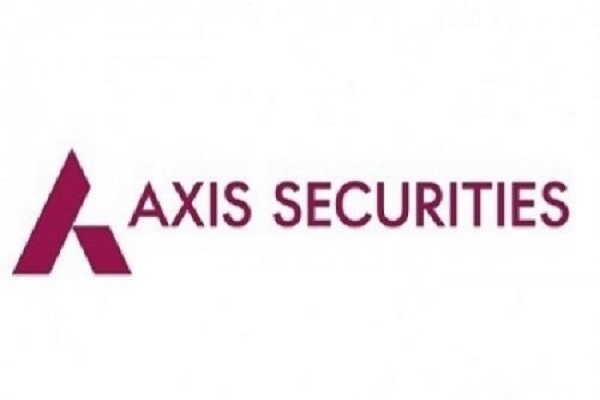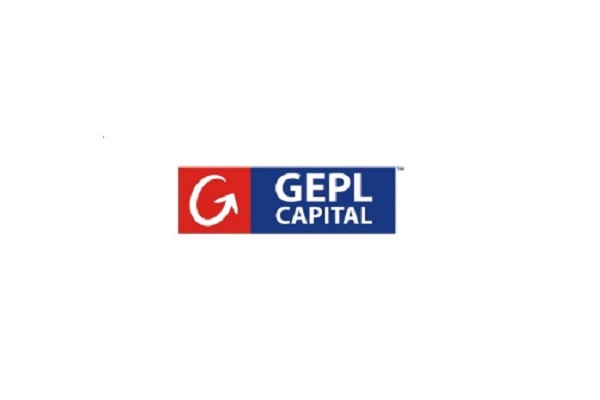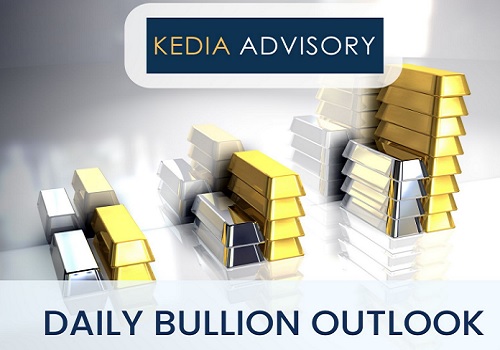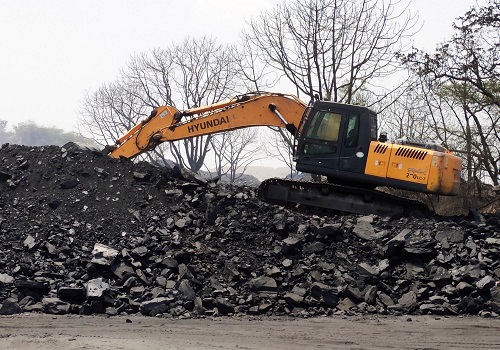Gold trading range for the day is 71675-72695 - Kedia Advisory

Gold
Yesterday, gold prices edged up slightly by 0.02% to settle at 72,193 as markets continued to assess the monetary policy outlook for major central banks. Federal Reserve members indicated that any reduction in the funds rate would require several months of lower inflation, increasing the criteria for a looser policy stance and boosting the US dollar. According to the CME FedWatch tool, traders currently see a 46% chance of a rate cut in September. Recent hawkish rhetoric from Fed officials has tempered expectations of imminent U.S. rate cuts. Despite a decline in inflationary pressures in April, following a period of elevated levels in the first quarter, Fed officials remain cautious. They believe that interest rates should stay elevated due to a lack of evidence that inflation will return sustainably to the 2% target. On the global front, gold imports to China via Hong Kong dropped by 38% in April compared to March, according to the Hong Kong Census and Statistics Department. Net imports totaled 34.6 metric tons in April, down from 55.8 tons in March. This marks a shift from the high consumption seen in the first quarter, where the China Gold Association reported a 5.94% year-over-year increase, with 308.91 metric tons consumed by China-based buyers. From a technical perspective, the gold market is experiencing short covering, as evidenced by a significant drop in open interest by 63.33% to settle at 1,515 contracts, while prices increased by 13 rupees. Currently, gold is finding support at 71,930, with a potential test of 71,675 if it breaks below this level. On the upside, resistance is expected at 72,440, with a move above this level possibly testing 72,695.
Trading Ideas:
# Gold trading range for the day is 71675-72695.
# Gold dropped as markets continued to assess the monetary policy outlook for major central.
# Fed members voiced that the funds rate will only be cut after multiple months of lower inflation.
# The US Dollar and bond yields rise as traders pare Fed rate-cut bets for September.
Silver
Yesterday, silver settled up by 0.75% at 96,162 as investors awaited a crucial inflation report later in the week, which could offer insights into the Federal Reserve's policy direction. Fed officials advocate for patience with the current interest rate framework, expressing concerns about the sustainability of inflation returning to the desired rate of 2%. Despite a decline in inflationary pressures in April, policymakers prefer to keep interest rates elevated, fearing a short-lived slowdown given the robustness of the labor market. Additionally, Fed policymakers remain open to tightening policy further if progress in curbing inflation stalls. In the geopolitical sphere, Iranian-backed Houthis fired anti-ship ballistic missiles from Yemen into the Red Sea, heightening concerns over maritime safety and escalating tensions in the region. India's silver imports in the first four months of the year surpassed the total for all of 2023, primarily driven by rising demand from the solar panel industry and investor optimism about silver's outperformance compared to gold. Increased imports by the world's largest silver consumer could bolster global prices, which are trading near their highest level in over a decade. India imported a record 4,172 metric tons of silver during January to April, nearly half of which came from the United Arab Emirates to leverage lower import duties. From a technical standpoint, the silver market is witnessing fresh buying interest, with a 2.96% increase in open interest to 28,973 contracts, alongside a substantial price increase of 714 rupees. Silver is currently supported at 95,095, with a potential test of 94,030 if this level is breached. Resistance is anticipated at 96,860, and a move above this level could see prices testing 97,560.
Trading Ideas:
# Silver trading range for the day is 94030-97560.
# Silver gains as investors geared up for a crucial US inflation report t
# Fed’s Kashkari said, “I think the odds of us raising rates are quite low, but I don’t want to take anything off the table.”
# Policymakers worry that the slowdown won’t be long-lasting given the strength in the labor market.
Crudeoil
Crude oil prices experienced a slight decline of -0.2% yesterday, settling at 6624, as the International Energy Agency (IEA) reported a significant increase in global oil stocks for March. The IEA noted a surge of 34.6 million barrels from February, mainly attributed to a rise in oil held on tankers in transit. This trend continued into April as crude and fuel were unloaded from tankers, coupled with decreased exports from Russia and the Americas. While non-OECD countries saw their crude stocks rise, OECD stocks hit their lowest levels in 20 years, with a substantial increase reported in China. Despite the typical spring build in inventories as refineries undergo maintenance ahead of summer demand, the sharper-than-expected global inventory rises have weighed on crude prices. Factors such as a milder-than-anticipated northern hemisphere winter and concerns over prolonged higher interest rates have also contributed to this pressure. However, OECD stocks remain below the five-year average by approximately 38 million barrels, according to OPEC. Looking ahead, OPEC anticipates demand for its crude to average 43.65 million barrels per day (bpd) in the second half of the year, suggesting a potential drawdown of 2.63 million bpd if output remains steady at April's rate. From a technical standpoint, the crude oil market is witnessing long liquidation, evidenced by a decrease in open interest by -12.58% to settle at 5710 contracts, while prices declined by -13 rupees. Presently, crude oil is finding support at 6578, with a potential test of 6532 if it breaks below this level. On the upside, resistance is expected at 6699, with a move above potentially leading to prices testing 6774.
Trading Ideas:
# Crudeoil trading range for the day is 6532-6774.
# Crude oil dropped as the IEA said that total global stocks grew
# Geopolitical concerns in the Middle East limited the downside.
# Oil storage rise supports case for keeping OPEC+ cuts
Naturalgas
Natural gas prices experienced a notable decline of -5.14% yesterday, settling at 223.1, driven by indications of increased gas extraction and concerns over the significant oversupply still present in storage. Despite forecasts indicating higher demand for the following week and increased flow to liquefied natural gas (LNG) export plants, prices dropped sharply. Gas output in the Lower 48 U.S. states dipped slightly from April to May but saw a daily uptick from the 15-week low recorded at the beginning of May. This uptick in production suggests that the recent surge in futures prices prompted some drillers to increase gas production. However, despite this recent increase, U.S. gas production remains down approximately 9% for the year, as energy firms like EQT and Chesapeake Energy scaled back drilling activities earlier in the year when prices hit multi-year lows. Meteorologists are projecting near-normal weather across the Lower 48 states until early June, followed by a period of warmer-than-normal temperatures. LSEG forecasts a rise in gas demand in the Lower 48, including exports, from 93.6 bcfd this week to 94.1 bcfd next week. Additionally, U.S. exports to Mexico have increased, reaching an average of 7.1 bcfd so far in May, up from 6.5 bcfd in April. From a technical standpoint, the natural gas market is witnessing fresh selling pressure, with open interest increasing by 14.71% to settle at 17,709 contracts, while prices fell by -12.1 rupees. Currently, natural gas is finding support at 217.6, with a potential test of 212.2 if it breaks below this level. On the upside, resistance is anticipated at 232.8, with a move above potentially leading to prices testing 242.6.
Trading Ideas:
# Naturalgas trading range for the day is 212.2-242.6.
# Natural gas fell due to increased gas extraction from the ground and concerns about oversupply in storage.
# Despite forecasts for increased demand next week and increased gas flow to LNG export plants, the price decline occurred.
# Gas output in Lower 48 US states fell to an average of 97.7 billion cubic feet per day in May, down from 98.2 billion in April.
Copper
Copper experienced a slight decline of -0.43% yesterday, settling at 903.55, primarily attributed to higher inventories in China amidst strong output and soft physical demand. However, optimism emerged as China implemented measures to bolster its property sector, including lowering minimum downpayment ratios for homebuyers and relaxing restrictions in megacities like Shanghai. This move boosted copper demand prospects, reflecting positively on the market sentiment. The International Monetary Fund revised its forecast for China's economic growth to 5% for this year, citing a robust first quarter, up from an earlier projection of 4.6%. Despite Shanghai copper stocks rising by 240% year-on-year and deliveries to LME warehouses, China's daily refined copper production rate hit a record high, standing at 38,000 tons in April. However, copper inventories in Shanghai Futures Exchange warehouses remained near four-year highs, indicating a surplus in the market. According to the International Copper Study Group (ICSG), the global refined copper market showed a surplus of 125,000 metric tons in March, a slight decrease from February's surplus of 191,000 metric tons. World refined copper output reached 2.33 million metric tons, while consumption stood at 2.20 million metric tons. Adjusted for changes in inventory in Chinese bonded warehouses, there was a surplus of 138,000 metric tons in March, compared to 221,000 metric tons in February. From a technical perspective, the copper market witnessed fresh selling interest, with a 4.21% increase in open interest to settle at 5,638 contracts, coupled with a price decline of -3.9 rupees. Copper is currently supported at 896.3, with a potential test of 888.9 if this level is breached. Resistance is anticipated at 912.7, and a move above this level could see prices testing 921.7.
Trading Ideas:
# Copper trading range for the day is 888.9-921.7.
# Copper dropped amid higher inventories in China amid strong output and soft physical demand.
# UBS expects copper prices to reach $11,500/mt by year-end, $12,000/mt or above by mid-2025
# Latest supply-demand estimates point to a roughly 390,000 metric tons (mt) copper deficit for both this year and 2025 - UBS.
Zinc
Zinc prices saw a marginal decline of -0.33% yesterday, settling at 275.75, as traders engaged in profit booking following recent price increases. The market continues to scrutinize the demand outlook, particularly in light of economic data from key consumer China and recent stimulus measures implemented by Chinese authorities. Zinc, a crucial building material, has been impacted by the property crisis in China, where unsold home inventories reached an eight-year peak. However, hopes for interest rate cuts and the announcement of historic support packages, such as lowered mortgage interest rates, have bolstered the commodity's industrial outlook. In April 2024, China's refined zinc output experienced a month-on-month decrease of 3.99%, totaling 504,600 metric tons. However, cumulative output from January to April remained relatively stable, with a slight year-on-year decrease of 0.47%. Domestic zinc alloy production in April increased, offsetting some of the decline in refined zinc output. Maintenance of smelters in various regions contributed to the decrease in output. On the global front, the zinc market surplus narrowed to 52,300 metric tons in March from 66,800 tons in February, according to data from the International Lead and Zinc Study Group (ILZSG). Despite this reduction, the global surplus for the first three months of the year remained higher than the same period last year. From a technical perspective, the zinc market is undergoing long liquidation, with a drop in open interest by -5.45% to settle at 3,211 contracts, while prices declined by -0.9 rupees. Presently, zinc is finding support at 273.9, with a potential test of 271.9 if it breaks below this level. On the upside, resistance is expected at 278.7, with a move above potentially leading to prices testing 281.5.
Trading Ideas:
# Zinc trading range for the day is 271.9-281.5.
# Zinc prices dropped on profit booking after prices rose as traders continue to assess the demand outlook.
# The global zinc market surplus fell to 52,300 metric tons in March from 66,800 tons in February – ILZSG.
# China's refined zinc output was 504,600 mt, a month-on-month decrease of 20,900 mt or 3.99%.
Aluminium
Aluminium prices surged by 1.4% yesterday, closing at 250.1, driven by supply constraints and increased buying interest from funds shifting from copper. The influx of "wider money" into metals further supported aluminium prices. Recent shortages of alumina, a key intermediary product in aluminium production, resulted from reduced output in China and disruptions to Rio Tinto's Australian exports. Rio Tinto's declaration of force majeure on alumina cargoes from its Australian refineries due to gas shortages heightened concerns about supply from the world's second-largest producer. The aluminium market exhibited confidence in demand as one global producer offered Japanese buyers a premium of $175 per metric ton for July-September, representing an 18% to 21% increase on a quarterly basis. Global primary aluminium output in April increased by 3.3% year-on-year to 5.898 million tonnes, according to data from the International Aluminium Institute (IAI). China's unwrought aluminium and products imports surged by 72.1% year-on-year in April to 380,000 metric tons, with first-four-month imports reaching 1.49 million tons, an 86.6% increase from the previous year. Looking at technical indicators, the aluminium market witnessed fresh buying interest, with open interest rising by 12.12% to settle at 3,877 contracts. Prices rose by 3.45 rupees. Currently, aluminium is finding support at 247.5, with a potential test of 245 if it breaks below this level. On the upside, resistance is anticipated at 251.7, with a move above potentially leading to prices testing 253.4. This technical overview suggests a bullish sentiment prevailing in the aluminium market, supported by supply tightness and robust buying interest, indicating potential further upward momentum.
Trading Ideas:
# Aluminium trading range for the day is 245-253.4.
# Aluminium prices rose on supply tightness and surging buying interest from funds switching from copper.
# A continued inflow of "wider money" into metals, providing further support for aluminium.
# Shortages of alumina, emerged recently because of lower output from China and disruption to Rio Tinto's Australian exports.
Cottoncandy
Cottoncandy saw a marginal decline of -0.24% yesterday, settling at 58,540, primarily driven by sluggish milling demand amidst muted yarn demand in the global market. However, downside pressure was limited as India continued to witness strong demand for its cotton from countries like Bangladesh and Vietnam. Additionally, prospects of a better crop in countries such as Australia and projections of increased cotton production, consumption, and trade by the International Cotton Advisory Committee (ICAC) for the next season, 2024-25, provided some support to the market sentiment. India's cotton stocks are expected to fall by nearly 31% in 2023/24, reaching their lowest level in more than three decades, due to lower production and rising consumption. This could limit exports from India and support global prices, while also potentially impacting the margins of local textile companies. Looking ahead, for the marketing year 2024/25, India's cotton production is estimated to decrease slightly due to farmers shifting acreage to higher return crops, while mill consumption is forecasted to increase as yarn and textile demand improves in major international markets. With the recent notification of an import duty recension on extra-long staple (ELS) cotton, imports are expected to rise. Meanwhile, China's cotton imports for MY 2024/25 are forecasted to increase on higher domestic and international demand for textile and apparel products, with production expected to remain stable in Xinjiang but decline in other regions. Technically, the cotton market observed fresh selling interest, with a 2.11% increase in open interest, alongside a price decline of -140 rupees. Cottoncandy is currently supported at 58,320, with a potential test of 58,110 if this level is breached. Resistance is anticipated at 58,820, and a move above this level could see prices testing 59,110.
Trading Ideas:
# Cottoncandy trading range for the day is 58110-59110.
# Cotton dropped as sluggish milling demand is still concerns amid muted demand of yarn.
# U.S. ending stocks projected 1.3 million bales above 2023/24 level
# Global supplies in 2024/25 projected to be higher than previous year
# In Rajkot, a major spot market, the price ended at 27265.6 Rupees gained by 0.05 percent.
Turmeric
Turmeric prices edged up by 0.1% yesterday, settling at 18,666, as farmers withhold stocks in anticipation of further price increases. However, the upside appears limited due to increased supplies towards the end of the harvesting season. The current heatwave sweeping across India threatens to damage crop yields, exacerbating the supply crunch and supporting prices. The India Meteorological Department predicts continued hot weather, with rainfall in southern India significantly lower than normal, further impacting turmeric production. The Ministry of Agriculture and Farmers’ Welfare's first advance estimate for 2023-24 pegs turmeric production at 10.74 lakh tonnes, down from 11.30 lakh tonnes the previous year. Additionally, demand destruction has occurred as prices surged, leading many to adopt a hand-to-mouth approach. Regions like Sangli, Basmat, and Hingoli are experiencing strong demand for quality turmeric, driven by expectations of an increase in sowing areas. In terms of trade, turmeric exports during Apr-Mar 2024 dropped by 4.75% compared to the previous year, while imports declined by 12.71%. Notably, there was a significant rise in exports in March 2024 compared to February 2024, although a slight drop was observed compared to March 2023. In the Nizamabad spot market, a key indicator, turmeric prices ended at 18,140.75 Rupees, down by -0.49%. From a technical standpoint, the turmeric market saw short covering, with a drop in open interest by -3.6% to settle at 14,210 contracts, while prices rose by 18 rupees. Presently, turmeric is finding support at 18,300, with a potential test of 17,932 if it breaks below this level. On the upside, resistance is expected at 18,958, with a move above potentially leading to prices testing 19,248.
Trading Ideas:
# Turmeric trading range for the day is 17932-19248.
# Turmeric gains as farmers are holding back stocks in anticipation of a further rise.
# The current heat wave could severely damage the crop yield, further contributing to the supply crunch.
# The Ministry of Agriculture first advance estimate for turmeric production in 2023-24 is estimated at 10.74 lakh tonnes
# In Nizamabad, a major spot market, the price ended at 18140.75 Rupees dropped by -0.49 percent.
Jeera
Jeera experienced a notable uptick of 1% yesterday, settling at 28,650, driven by a slowdown in arrival pace as both stockists and farmers hesitated to release their stocks amidst better price realization. Export demand is expected to surge at prevailing rates, bolstering upward movement in Jeera prices. Moreover, robust export demand and aggressive buying by stockists contributed to the positive sentiment. Global buyers are showing a preference for Indian jeera due to tightening global supplies, further supporting prices. In terms of production, the sowing area for cumin has seen significant increases in key regions such as Gujarat and Rajasthan, leading to a substantial rise in production. Gujarat is estimated to have achieved a new record production of 4.08 lakh tonnes, while Rajasthan also witnessed a 53% increase in production. Overall, favorable weather conditions and increased sowing areas have doubled cumin production compared to the previous year. However, despite the positive production outlook, Jeera exports during Apr-Mar 2024 saw a decline of 13.53% compared to the previous year, reaching 152,189.32 tonnes. This drop in exports could be attributed to volatile domestic prices in 2023, which impacted international competitiveness. Nonetheless, there has been a notable increase in exports in March 2024 compared to the previous month and year, indicating a potential recovery in export demand. From a technical standpoint, the Jeera market observed short covering, with a 3.26% drop in open interest and a price increase of 285 rupees. Jeera is currently supported at 28,180, with a potential test of 27,700 if this level is breached. Resistance is likely at 28,920, and a move above this level could see prices testing 29,180.
Trading Ideas:
# Jeera trading range for the day is 27700-29180.
# Jeera gains as arrival pace has started slowed down as stockists and farmers are reluctant to release their stocks.
# Global buyers preferred Indian jeera with tightening global supplies.
# New arrivals have started in Gujarat since last 20-25 days and new arrivals have started in Rajasthan also since last 15 days.
# In Unjha, a major spot market, the price ended at 28667.8 Rupees dropped by -0.27 percent.
Views express by all participants are for information & academic purpose only. Kindly read disclaimer before referring below views.























